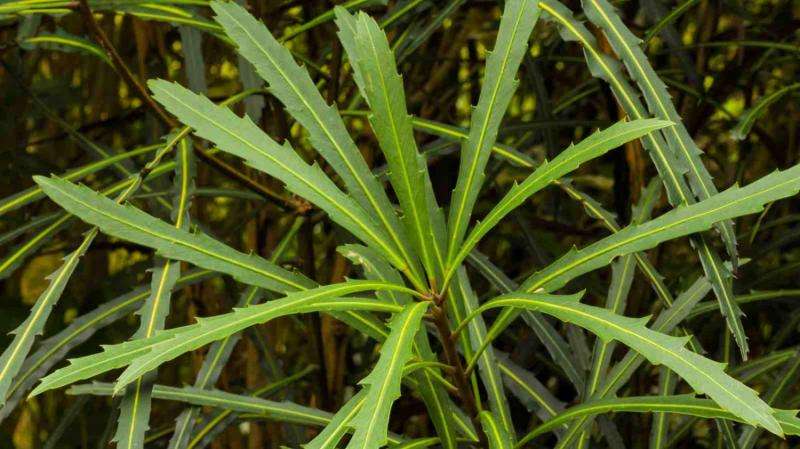How munching Moa affected plant evolution

For his PhD in Ecology and Biodiversity, Patrick Kavanagh compared plant species on offshore islands to their close relatives on the mainland to assess differences in size and growth patterns.
"I found that island species tended to produce larger seeds, which may be advantageous on an island because if the seeds are too easily dispersed they could end up in the ocean," says Patrick.
The rest of his thesis was focused on the role that herbivores play, which led him to the Chatham Islands to conduct fieldwork.
"In New Zealand we have plants that develop a unique growth form— characterised by high-angled branching, leading to a tangled mass of branches, and very small leaves. But in the Chathams that sort of growth form is nowhere near as prevalent—many related species don't show it at all, with branches that are more upright and which don't cross over so much. The leaves are bigger too."
Patrick says there have been a variety of hypotheses over the years to explain this. "It's been suggested that the high-angled tangle of branches we see on mainland New Zealand provides protection from wind and frost, but it's a lot windier on the Chatham Islands."
However one known difference is that Moa never reached the Chatham Islands. "It seems quite logical—a reduction in herbivory pressure on the plants would have relaxed the need for small leaves that are hard to reach, meaning that the island species were able to grow bigger leaves to intercept more light and be more productive."
For the last part of his thesis Patrick narrowed his focus to one species: the lancewood, also known as horoeka or Pseudopanax crassifolius.
"The lancewood is pretty amazing and unique. It starts out with rigid, saw-like leaves when it's juvenile but at about three metres in height, the leaves become wider and more rounded in shape. It's no coincidence that three metres is the same as the maximum height that the largest Moa species was able to reach."
While this theory has been around for some time, Patrick has added weight to the argument with his examination of the changes in colour to the lancewood leaves as the plant matures.
"There are small green spots on the top side of the leaves which are associated with the lateral spikes down the sides. These spots are most conspicuous when the plant is poorly developed and therefore most vulnerable to predators—the spots act as a kind of untruthful signal to deter moa and other herbivores from eating it.
"I also noticed that the underside of the lancewood leaf changes colour as the plant develops. Small seedlings are light green underneath the leaf, but that turns dark red when it reaches sapling stage. It changes back to green when the plant is fully grown."
Patrick used spectral analysis techniques to test whether the dark red colouration makes the leaves more conspicuous to herbivores looking up from below. "The higher contrast of dark red against the other green foliage happens when the leaves are most spikey and therefore best defended. In this phase of the plant's life, it's a more truthful warning to any bird planning to eat it—there'd be painful consequences."
Provided by Victoria University




















